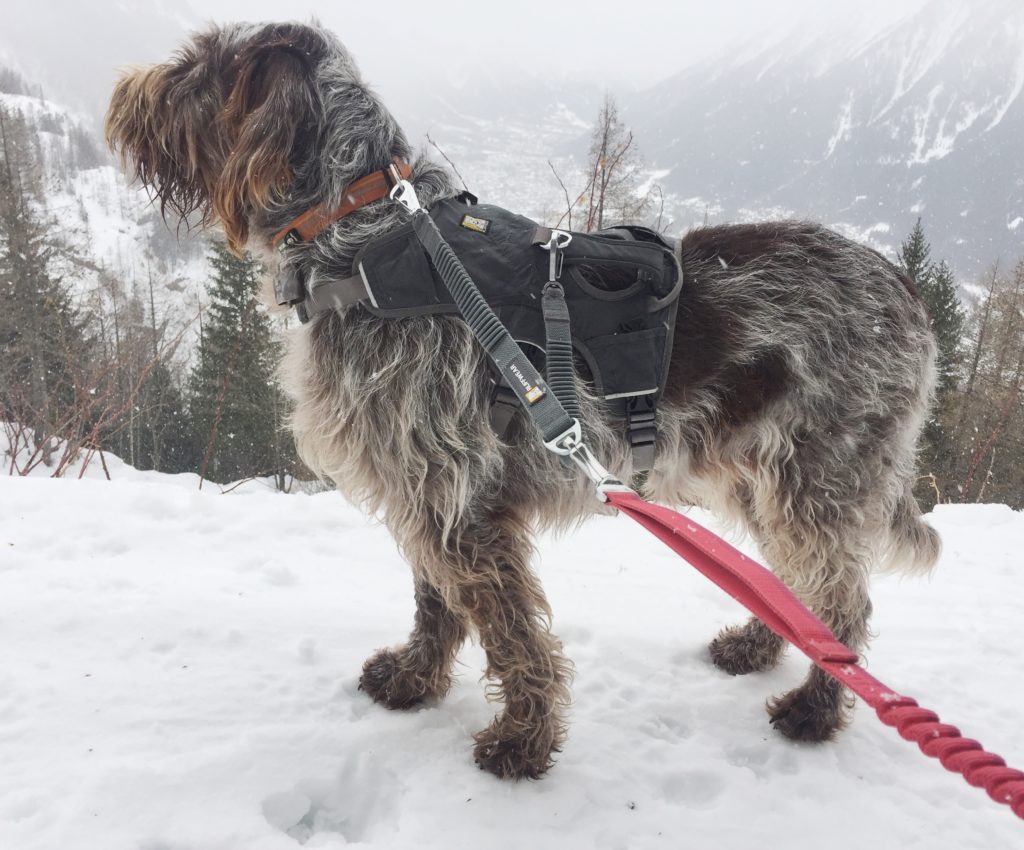Preparation for your dog’s arrival
We try to get as accurate an assessment of the dog’s character and needs in order to find a home that will be a good fit, before they travel, and what we do know will have been discussed with you. However sometimes this is just not possible, and it is vital to realise that they do all react differently. A flexible approach is important, working with what the dog is comfortable with.
All dogs are different and we will discuss any specific issues with you prior to your commitment. Some are from a home environment but even for these better-adjusted dogs, the journey and frequent changes in routine are likely to be stressful for them, so it is best to go slowly with them. The majority have never lived indoors so everything is new for them. They often embrace their home comforts quickly, but it’s important not to expect too much too soon. More traumatised or abused dogs need much more care and more time to adjust.
For a dog that’s always lived outside, in many ways it is not unlike having a puppy – they have to learn everything from scratch.
They often have no sense of boundaries about your food, counter surfing, chewing etc. Former street dogs, particularly, can need to have food and bins very firmly closed away. Toilet training generally has to be started from the beginning – however, most learn very fast when there is another dog to copy.
A crate at night can be useful for this. In general, a crate can often be very useful for a rescue dog, providing a safe space for retreat should the dog need it. A blanket on top can be useful to create an enclosed den. If you don’t want to use a crate, give thought to where the dog’s personal safe space will be. The first few weeks can be very overwhelming for a recently rescued dog and they can really need their down-time.
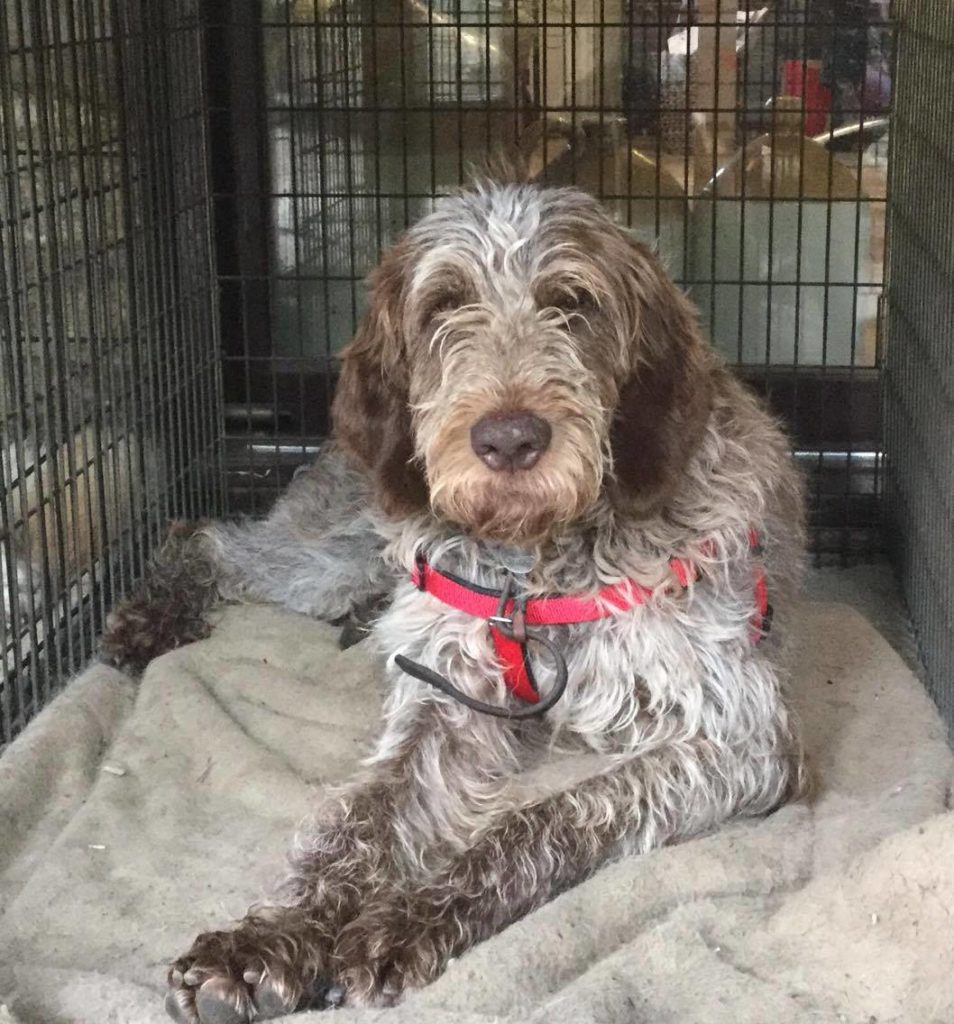
Clear your schedule for as much time as possible when welcoming a new dog into your family. Make sure any visitors to the house are aware that a potentially nervous rescue has arrived – dogs have escaped this way when doors are left open by arriving visitors.
Remember that your new arrival will need to be gradually accustomed to an entirely new routine and environment. Plan on allowing some time to let them settle. We recommend that a dog is left unsupervised as little as possible during the first days
Teaching them to settle quietly in a crate can be a big plus, as they are unlikely to have been left in a house before, and will need to have this introduced over time, starting with short periods and working up to longer ones. A webcam or an old iPhone with an app like Dogmonitor can be useful to keep an eye on the dog.
Consider what other parts of your daily routine or lifestyle may need careful introduction – for instance busy streets, horses, boats, cars, train travel, umbrellas, binmen, washing machines, vacuum cleaners, family visits….everywhere and everyone is different and needs careful consideration to smooth the dog’s transition to its happy new life. Remember they cannot understand that things are going to be better now and need lots of reassurance and routine to settle.
Remember also they have obviously spent a lifetime understanding Italian so language is an issue. Even if they have been working dogs, they will not understand commands in English…and if they have been street dogs they will not understand commands at all, or even the concept of a command. Culturally there are huge adjustments for the dog.
If they have had some training you can try Italian commands, transitioning them to English in time.
Sit = SEDUTO
Good = BRAVO / BRAVA
Stay = FERMO / FERMA
Down = A CUCCIA /GIU’
Come = VIENI, VIENI QUI
And also they may know general endearments like CIAO, BELLA or BELLO, BELLISIMO or BELLISIMA, TESORO
Your own dog and other family members
Plan the best way to introduce the new dog to the house.
Bringing them into a more neutral space such as the garden for introduction is best. If you need to bring the newcomer through the house to get to the garden, plan how you will manage this (perhaps someone can take the resident dog out for a walk? Or perhaps they can go into another part of the house while the new dog comes through?)
Food
We suggest a light meal on arrival, some cooked chicken and rice or sweet potato is ideal as this is generally easily digested. Feed little and often to start with, and then mix in with the regular food you plan to feed them on, and build to to the normal feeding routine over 2 – 3 days.
Small meals more frequently also encourages bonding, training and highlights quickly anything that does not agree with your dog!
A Kong filled with food and then frozen can be a good way to settle a nervous dog. Resource guarding can be an issue with dogs who have always had very little, this should be worked on in a positive way. There are some good suggestions here.
Microchip
Your dog’s chip will be listed on its passport. It should be registered as an imported dog as soon as possible. This will help should it escape but is also a legal requirement now and is often overlooked with rescue dogs.
For the UK, this can be done at Petlog (entirely online service) or Identibase, where you can download, complete and return a foreign chip registration form along with a copy of your pet’s passport (the page with the microchip number and pets details).
Do not let your dog off the lead until this process is completed! If they run away, it is very difficult to trace a chip that is registered in another country – it can take weeks or even prove impossible.
Doglost.com
We highly recommend that you pre-register your new dog at www.doglost.co.uk. Escapes during the first few weeks are not uncommon, with a nervous dog that is not yet orientated to its new surroundings. It takes precious time in an emergency situation to get to a computer, find a clear photo, find chip details etc and register a dog – time that could be vital. Once a dog is registered and on their system, it can be broadcast as an alert to local networks in a matter of minutes, via phone call if needed.
Leads and harnesses
For collection, we recommend either:
– a double collar and lead (ideally one normal and one slip lead – Kennels also often use slip leads as they are easier to put on a nervous dog.)
– or a collar and lead plus a secure harness that the dog cannot get out of, such as the Ruffwear Webmaster.
You may have another combination that you prefer…the main thing is that a single collar and lead is not enough – it can be slipped too easily. You need at least two points of attachment. A coupler or double ended lead can also be a useful option.
Prior to collection, we recommend that you ensure you are familiar with the harness and lead combination you have chosen – check it on another dog, for instance. Put your phone number on the dog’s harness and use a nametag on the collar.
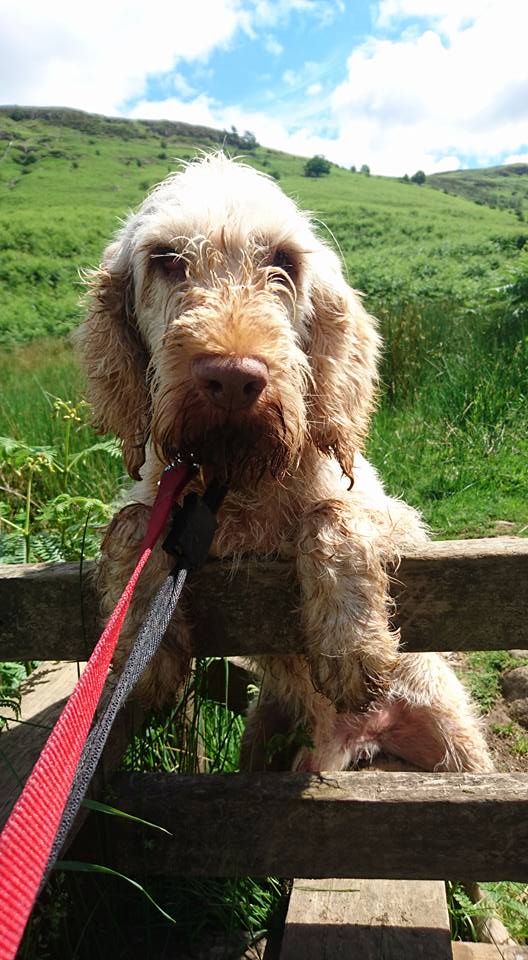
Check harness buckles and materials, collar fastenings and lead clips very carefully, to make sure they are strong, in good working order, and cannot accidentally be undone.
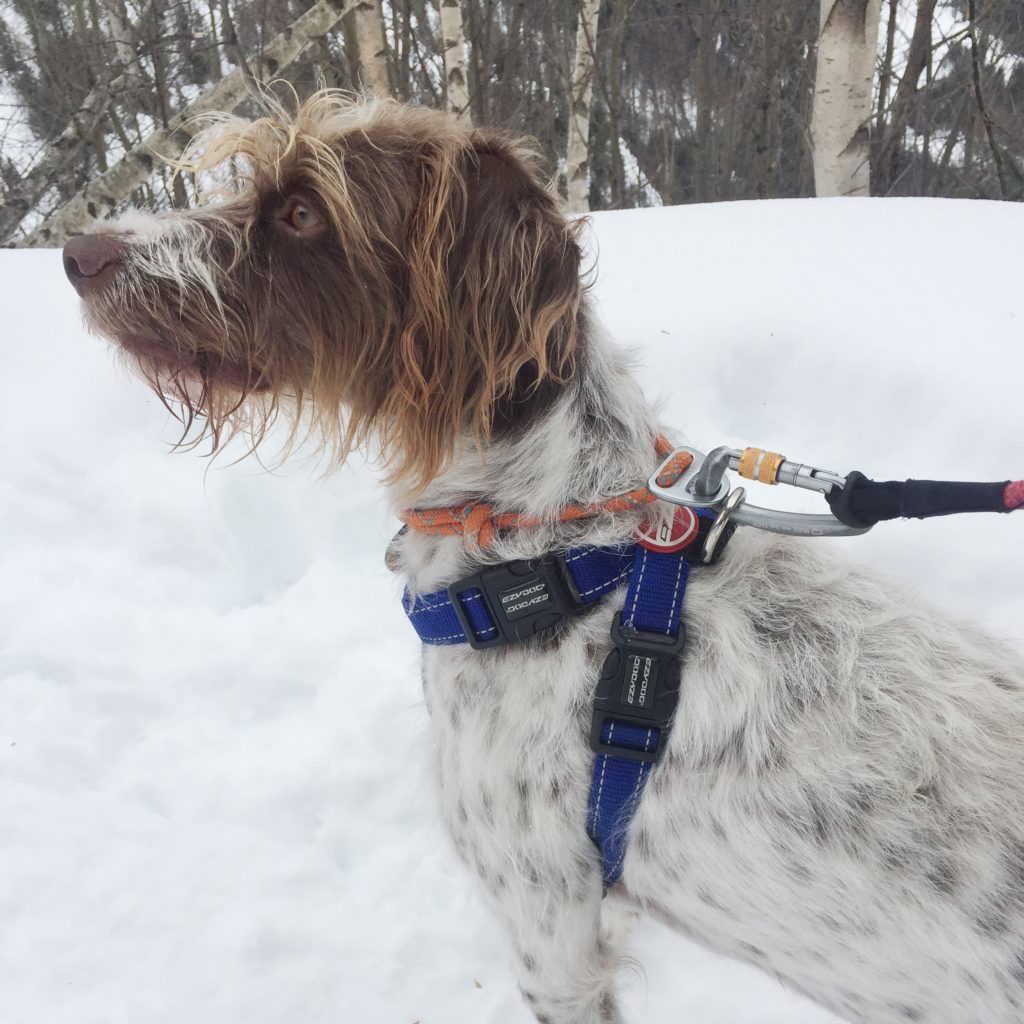
Please think very carefully about your daily routine and how to keep the dog secure at all times. Check your garden (and any other areas where the dog is loose) very thoroughly for possible escape routes. There have been numerous escapes of SOFA rescues in the first weeks, from extremely experienced owners – it is so easily done. Most returned safely but one sadly did not. These were very stressful times for all involved, not least the dogs.
Insurance and Medical issues – before arrival
Please do read our page dedicated to medical issues here
We try hard to give the most accurate picture possible of a dog’s health before it arrives. However, conditions can be undetected in both refuge and in foster, vets can miss things, translation issues can cause misunderstandings, or a dog’s condition can change. The stress of the journey or the change in diet and lifestyle can also precipitate a condition.
Because of this, for a dog arriving from overseas, it is absolutely vital that you have insurance in place for your dog before arrival. Insurance policies sometimes are not valid until two weeks after they are taken out so check this carefully. If the dog is uninsurable due to age, it is wise to have a sum set aside in case of treatment that may be needed.
If at all possible, it’s good to discuss the newcomer with your vet before their arrival, in case of anything they may have concerns about.
Please arrange insurance well before your dog arrives – many companies only cover you once two weeks have passed. When trawling all the insurance companies please also input the value of your dog as nil, this makes a huge difference to premiums. As they will all be neutered and imported rescues, this may save you money and will keep the position clear in the event of a claim.
Although we completely understand that for those with multiple dogs, it’s often better to set a sum aside, we recommend that you get insurance for any dog imported from abroad, at least for the first year.
Your own dog and other family members
Plan the best way to introduce the new dog to the house.
Bringing them into a more neutral space such as the garden for introduction is best. If you need to bring the newcomer through the house to get to the garden, plan how you will manage this (perhaps someone can take the resident dog out for a walk? Or perhaps they can go into another part of the house while the new dog comes through?)
If you have a dog already, make sure it doesn’t lose out with the new family member, which can create resentment. Make sure that the dogs are a positive experience for each other. It is not uncommon for recently arrived rescues to be very stressed and this can result in some out-of-character aggressive behaviour through their fear. Keep calm, soothe the dogs and work on small, positive experiences together. Give them space to move around each other – body language is very important for dogs.
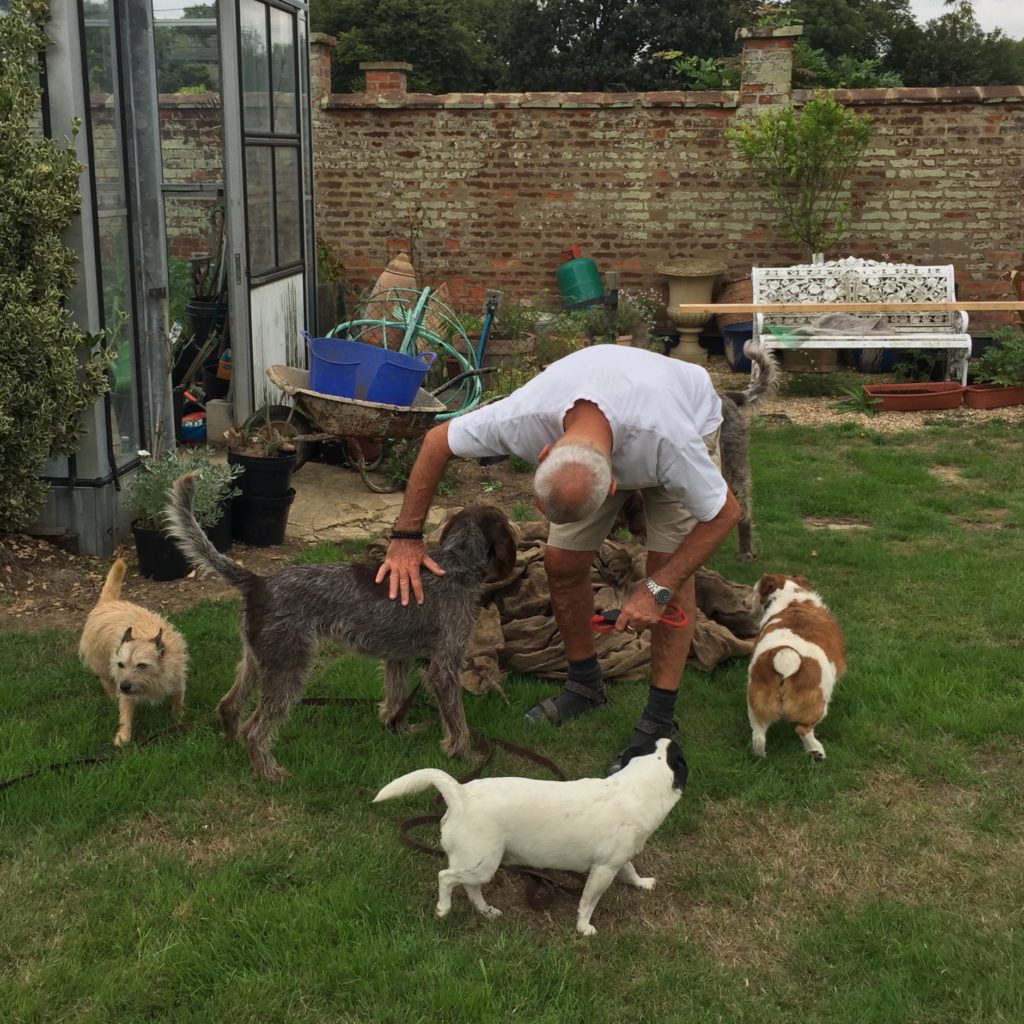
Food
On arrival they are likely to be hungry. They will not have had a large meal en route as we do not want them to be sick or have the runs.
We suggest a light meal of a little chicken and rice to start with, as this is generally easily digested. Feed little and often to start with, and then mix the chicken and rice in with the regular food you plan to feed them on, and build to to the normal feeding routine over 2 – 3 days.
Small meals more frequently also encourages bonding, training and highlights quickly anything that does not agree with your dog!
A Kong filled with food and then frozen can be a good way to settle a nervous dog. Resource guarding can be an issue with dogs who have always had very little, this should be worked on in a positive way. There are some good suggestions here.
Transport logistics
It is impossible to predict exactly what time and even what day the dogs arrive, due to traffic. We keep you updated via Messenger group, and the time estimates become more accurate the closer the transport gets.
If your dog is being delivered to your house, please keep your schedule as free as possible and have someone to help as a backup in case of emergency.
If you are meeting the transport (eg at a services) please plan to arrive in good time. It is vital to have a back-up plan in case of breakdown or other emergency. It has happened more than once! Ask a friend or relative if they will be able to help transport should there be problems. There should be at least two people in the car – if this is impossible, the dog must the in a crate or secure dog compartment.

